 Food
Food  Food
Food  History
History 10 Odd Things Colonial Americans Kept at Home
 Weird Stuff
Weird Stuff 10 Superstitious Beliefs That Once Consumed Entire Cultures
 History
History 10 Bizarre Friendly Fire Incidents in Military History
 Technology
Technology 10 Modern Technologies That Accidentally Imitate Ancient Magic
 Mysteries
Mysteries 10 Mysteries of the Human Genome
 Weird Stuff
Weird Stuff 10 Things So Rare They’ve Only Been Found Once
 History
History 10 Legends Whose Last Moments Undid Their Glory
 Health
Health 10 Futuristic Ideas to Treat Common Medical Problems
 Weird Stuff
Weird Stuff Ten Surreal Attempts to Reverse Baldness
 Food
Food 10 Everyday Foods You Didn’t Know Were Invented by the U.S. Military
 History
History 10 Odd Things Colonial Americans Kept at Home
 Weird Stuff
Weird Stuff 10 Superstitious Beliefs That Once Consumed Entire Cultures
Who's Behind Listverse?

Jamie Frater
Head Editor
Jamie founded Listverse due to an insatiable desire to share fascinating, obscure, and bizarre facts. He has been a guest speaker on numerous national radio and television stations and is a five time published author.
More About Us History
History 10 Bizarre Friendly Fire Incidents in Military History
 Technology
Technology 10 Modern Technologies That Accidentally Imitate Ancient Magic
 Mysteries
Mysteries 10 Mysteries of the Human Genome
 Weird Stuff
Weird Stuff 10 Things So Rare They’ve Only Been Found Once
 History
History 10 Legends Whose Last Moments Undid Their Glory
 Health
Health 10 Futuristic Ideas to Treat Common Medical Problems
 Weird Stuff
Weird Stuff Ten Surreal Attempts to Reverse Baldness
10 Bizarre Things You Never Knew About Disney
We’ve already delved a bit into the mysterious and surprising world of Disney. And yet no matter how exhaustively we dig, we continue to find bizarre nuggets of trivia just under the veneer. Below are 10 more strange Disney facts, from stinging corporate avarice to drug dealing and shared underpants.
10The Story Of Menstruation
In the years following World War II, Disney transitioned from making propaganda films like 1942’s Victory Through Air Power to a series of instructional shorts. Titles included such gems as Tuberculosis and Cleanliness Brings Health.
For girls adapting to their developing bodies, Disney created 1946’s The Story of Menstruation, commissioned by International Celucotton (the company that would later become Kimberly Clark). This 10-minute film was distributed widely and was seen by tens of millions of schoolgirls well into the 1960s. Being a Disney product, the sanitized film depicts menstrual fluid as white and limits anatomical studies to bare cross-sections.
Although the short went on to win the Good Housekeeping Seal of Approval, it was really little more than an advertisement for International Cellucotton’s Kotex brand of female hygiene products, which was taking a beating from Procter & Gamble’s Tampax tampons.
9Self-Destructing DVDs
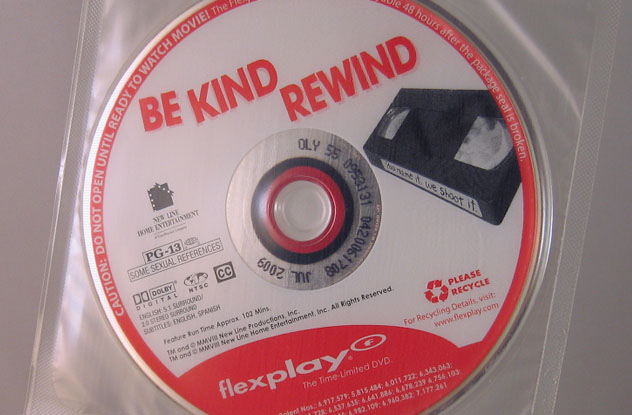
A decade ago, Blockbuster was at its peak, with 9,000 brick-and-mortar stores. Two years later, it had lost 75 percent of its market value, savaged by technologies that did not involve late fees. One such innovation was self-destructing Flexplay EZ-D DVDs, distributed by Disney through various outlets such as 7-Eleven convenience stores.
The DVDs were sold in vacuum-sealed packages that, once opened, left the disc playable for 48 hours. After that, the playing surface would oxidize, and the disc would be garbage.
Although they cost no more than a rental, and the system spared buyers the hassle of returning discs, the public never really embraced Disney’s gambit, perhaps because of its spectacular wastefulness. In 2007, Netflix began offering streaming services, likely heralding the eventual demise of the DVD industry altogether.
8The Family Photograph
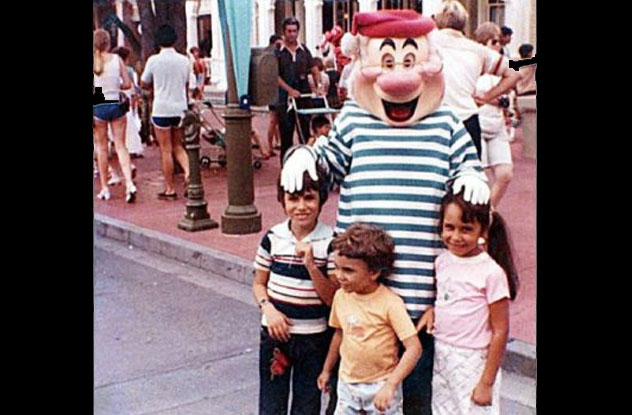
A fine line separates coincidence and magic, and this story might just leave you believing in the latter.
When engaged couple Alex and Donna Voutsinas began sifting through family snapshots shortly before their wedding, they came upon a most curious picture. The 1980 Disney World vacation shot showed five-year-old Donna posing with her siblings beside Mr. Smee, Captain Hook’s first mate. In the background, a man with a distinctive white shock of hair can be seen pushing a two-year-old in a stroller. The boy in the stroller was Alex.
The odds of this coincidence are incalculable. At the time, he and Donna weren’t even living in the same country—Alex was Canadian, Donna was from the US—and it would be another 15 years before they met. Alex’s mother corroborated the tale, pulling out snapshots of her family’s own Disney vacation that showed Alex’s father in the very same outfit featured in Donna’s picture.
The couple now live in Boynton Beach, Florida. They often visit Disney World, and their three children make a habit of looking for future spouses in the pictures they take there.
7Hannah Montana Was Almost Alexis Texas
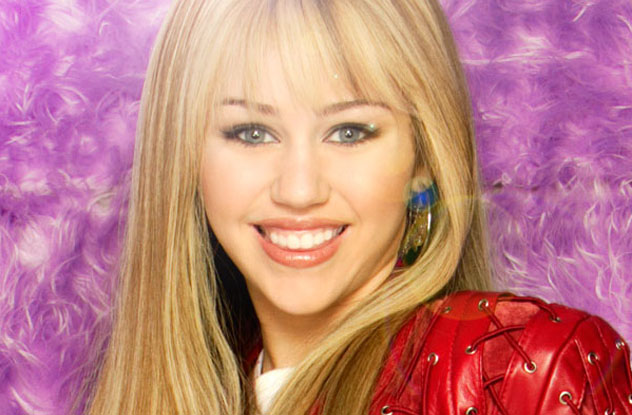
Although Hannah Montana would become one of Disney’s hit franchises, the show underwent an evolutionary process, with several different actresses considered for the main character. When Miley Cyrus arrived, then known only as the daughter of country music superstar Billy Ray Cyrus, she was actually auditioning for the role of the main character’s friend. However, producers liked her enough that she they gave her the lead role.
Several names were considered before the show settled on “Hannah Montana,” including “Alexis Texas.” The name Alexis Texas would not go to waste. It was claimed shortly thereafter by a young porn star (look her up on Twitter if you must) who began her career in 2006, the same year the show went into production. Alexis has since proven a tireless worker, filming over 500 movies.
6Character Protection
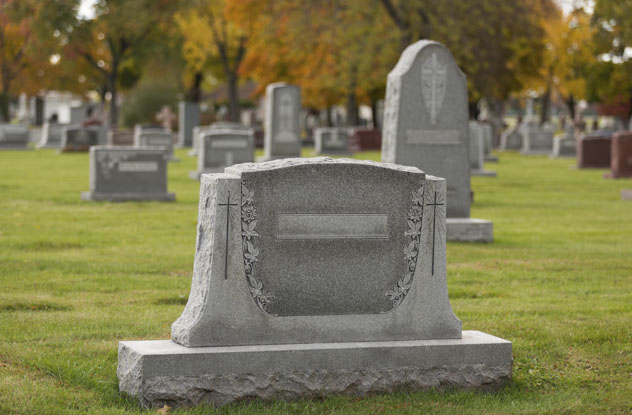
Disney has always been incredibly protective of its brand because its products are so popular and easily counterfeited. In several instances, the company has gone to unreasonable and even disgusting lengths to preserve copyright.
In 1989, three day-care centers in Florida had murals of beloved Disney characters on their walls, and the company threatened legal retribution if the paintings were not removed. Seeing the potential for great publicity, Hanna-Barbera Productions, creators of Scooby-Doo and Yogi Bear, quickly jumped at the opportunity to offer their characters for free use.
In 2006, upon learning that the parents of a stillborn baby in England wished to have the character Winnie the Pooh engraved on their child’s headstone, Disney threatened to sue the stonemason involved. Not surprisingly, this type of pointless corporate greed did not sit well with the public. Questioned, a Disney spokesman backpedaled, claiming, “Our deepest sympathies go out to the family at this time. We have been in contact with them and are in the process of fulfilling their original request.”
5Disney’s Housekeeper
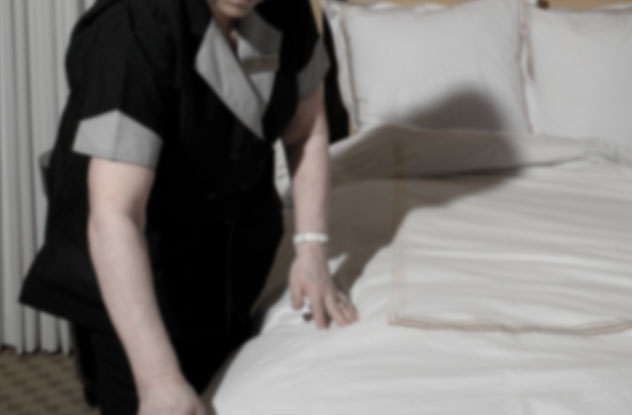
Thelma Howard was born into a life of tragedy—when she was just six, her mother died giving birth, and her sister was burned to death cooking dinner on a woodstove. Her family was poor, and though she aspired to become a legal secretary, she didn’t have enough money to finish business school and had to drop out.
In 1951, she became employed as a live-in housekeeper for the Disney family. She was a dedicated employee, beloved by the family, and she served them for 30 years. During her tenure, Walt Disney would give Thelma shares of stock in his company as holiday gifts. At the time, they were worth pennies, but over the course of decades, they rose astronomically in value.
Thelma retired in 1981 and died in June 1994. Although she’d lived most of her life as little more than a humble housekeeper, she left behind a spectacular legacy. Her estate was worth in excess of $9 million. Half went to her son Michael, and the other half went to benefit homeless and disadvantaged children.
4Escape From Tomorrow
As previously noted, Disney fiercely protects its intellectual property, but filmmaker Randy Moore’s avant garde guerilla project Escape from Tomorrow flies in the face of all that. The nightmarish surrealist film, which was shown at the 2013 Sundance Film Festival, was filmed entirely in Walt Disney World—without the park’s permission.
It follows the last day of a family’s Disney vacation. Before leaving for the park, father Jim White receives a call notifying him that he has been laid off from his job. He keeps this a secret and goes to the park with his wife, son, and daughter. While exploring the various rides and landmarks, Jim descends into a madness of psychedelic imagery.
Disney would never allow such a film to be produced on its grounds, so Moore took great lengths to plan the project so he could shoot secretly. He even mapped out the position of the Sun weeks in advance. Though Disney’s army of lawyers likely could have suppressed the film, the company instead decided to take a different approach. They took no action, hoping to deny the film any further publicity.
3Homeless Employees
The streets of Main Street USA might smell of freshly baked chocolate chip cookies, but not everything at Disney World is all sunshine and rainbows. Those earning Disney’s starting minimum wage of just $8.03 an hour ($16,702.40 a year before taxes) find even paying for an apartment nearly impossible, leaving some employees homeless.
The median rent in Osceola County is $800 per month. This may seem low compared to some urban centers in America, but when you factor in the cost of securing the apartment—laying down a security deposit and giving a few months’ rent in advance—the sum becomes hopelessly out of reach for low-level workers.
Many Disney employees and other low-income workers get by sharing cheap motel rooms on a week-by-week basis. Such rooms can be had for as little as $39 a night. This is affordable, if several adults share the room—though that typically violates hotel occupancy rules.
2Mickey Mouse The Drug Dealer
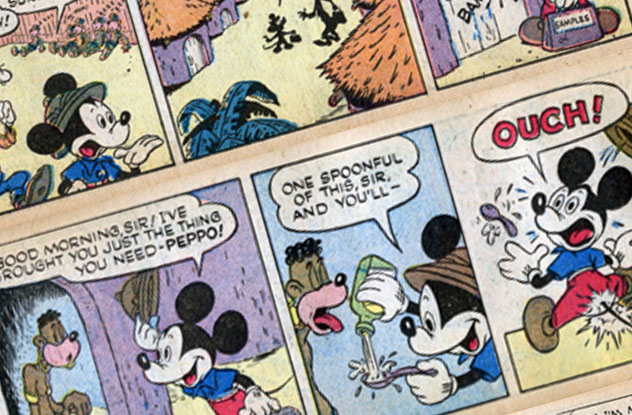
We’ve mentioned before that the historical Mickey Mouse could be a bit of a jerk, and in one 1951 comic, he becomes something of a drug dealer. In “Mickey Mouse and the Medicine Man,” a mini-comic distributed in conjunction with General Mills Wheaties, Mickey and Goofy discover a new medicine called “Peppo.” The thinly veiled amphetamine is so powerful it has them crashing into the ceiling and running in circles.
Impressed, Mickey decides the drug is a perfect get-rich-quick scheme, and he approaches Peppo’s manager about acquiring a distribution territory. They are given the entirety of Africa, which turns into just the kind of extravaganza you might expect, complete with crocodiles, a monkey, and spear-clutching natives.
The village they visit is held under the sway of the local doctor, who spikes everyone’s food with some kind of sedative so that he can steal the area’s diamonds for himself. Of course, Mickey and Goofy save the day, dosing the slumbering king with Peppo and deposing the villainous medicine man.
1Communal Underwear

Disney tightly controls every aspect of its parks’ operations to the point of obsession. For years, this meant a rather unsettling uniformity among employees who portray characters—those clad in Goofy, Pluto, and Mickey Mouse suits. Along with their costumes, the actors had to wear company-issued undergarments because personal underwear could bunch up and become visible to visitors.
While a little unappealing, this still wouldn’t have been a big deal, but these undergarments were shared among performers. At the end of a shift, the actors would hand in their costumes and underwear, which were supposed to be washed in hot water each night. However, employees began complaining that the underwear they were issued was filthy and smelly. Worse still, there were cases of pubic lice and scabies being transmitted.
In 2001, Disney finally reached an agreement with the actors’ union, allowing them to take their own undergarments home for washing.
Mike Devlin is an aspiring novelist.








